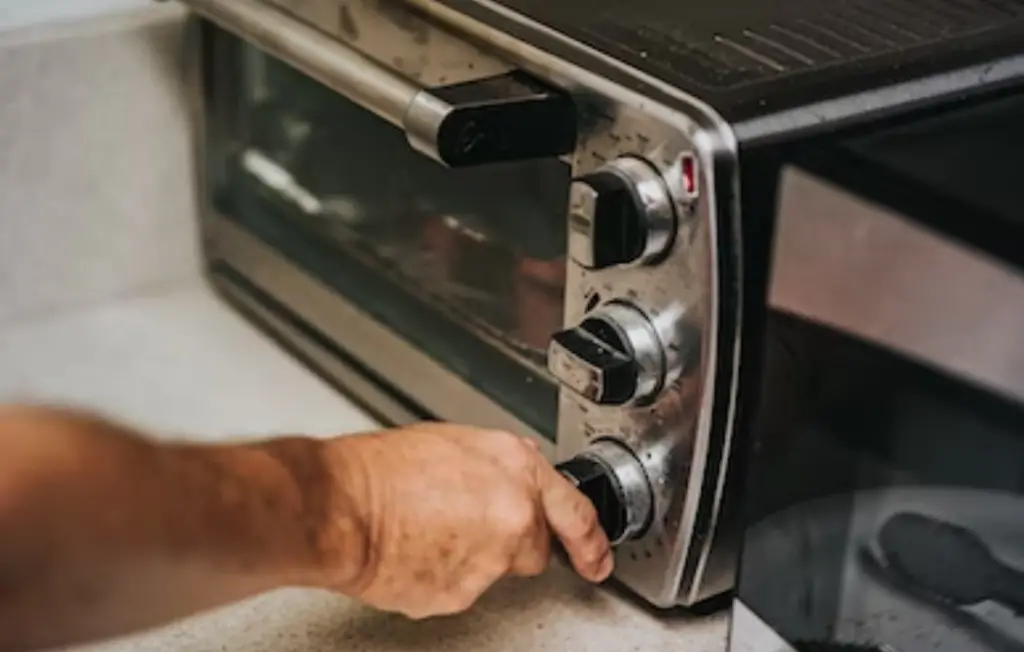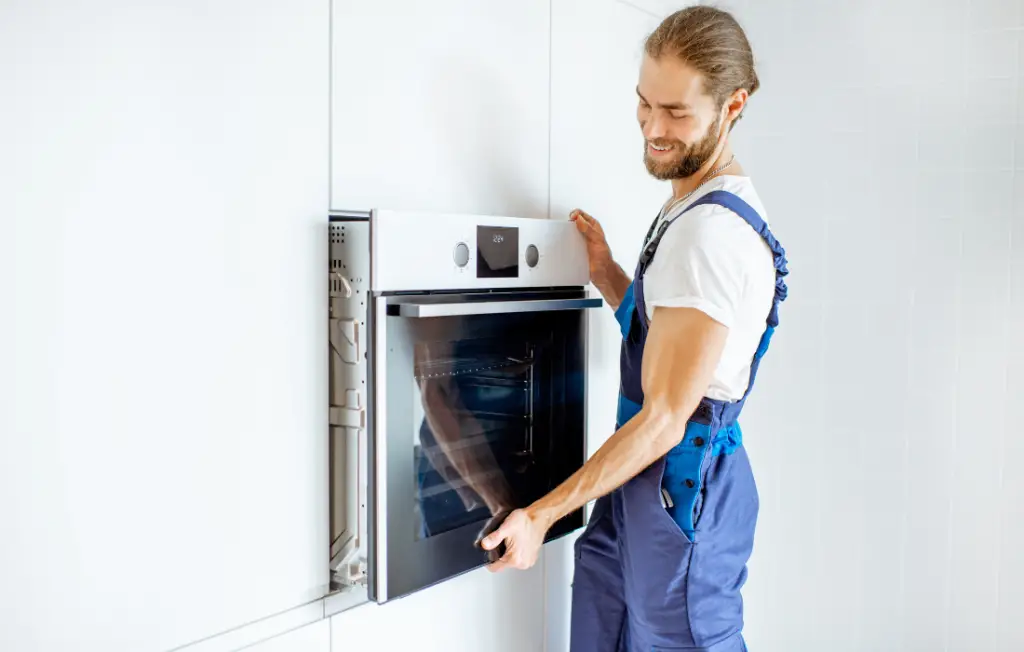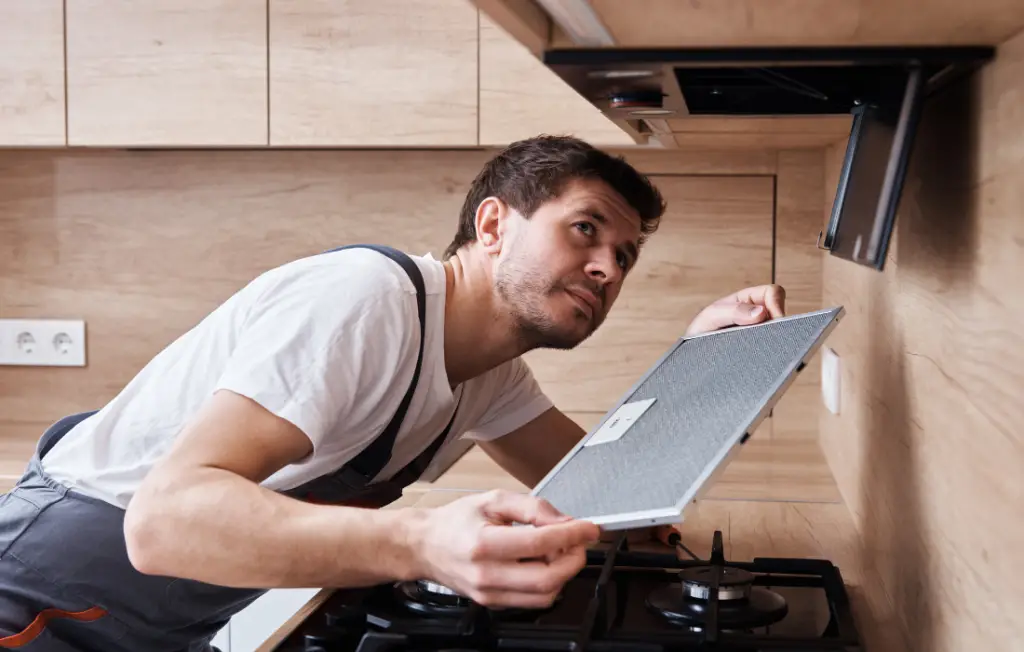If you’re looking to upgrade your kitchen with a toaster oven, it’s essential to consider how to protect your cabinets from the heat. Without proper protection, the intense heat generated by a toaster oven can damage your cabinets, ruin their finish, and even start a fire. As the Property Brothers always say, “home renovation should be done right,” and that means taking the necessary steps to protect your investment.
To protect your cabinets from toaster oven heat, consider the material and finish, adjust spacing, install a heat shield, monitor temperature, and follow manufacturer’s instructions. These steps can help keep your cabinets safe while using a toaster oven.
In this article, we’ll share expert tips on how to protect your cabinets from toaster oven heat, including the factors to consider, methods to use, and tips to follow to keep your cabinets safe and looking great.
Factors to Consider When Protecting Cabinets from Toaster Oven Heat
When protecting your cabinets from the heat generated by a toaster oven, there are several key factors to keep in mind. By considering these factors, you can help ensure that your cabinets stay safe and protected while using a toaster oven in your kitchen.
Cabinet Material and Finish
The material and finish of your cabinets play a significant role in how well they can withstand the heat generated by a toaster oven. Heat-resistant materials such as metal and stone are ideal, while wood and other materials may be more prone to damage. Additionally, a cabinet’s finish can affect how it responds to heat, with painted or laminated finishes generally being more heat-resistant than natural wood finishes. When selecting cabinets, consider their material and finish to ensure they can withstand the heat generated by your toaster oven.
Cabinet Construction and Spacing
The construction and spacing of your cabinets can also affect how well they can handle the heat from a toaster oven. Cabinets with solid backs and bottoms may be better insulated against heat, while cabinets with open backs may allow heat to escape more easily. Proper spacing between cabinets can also help dissipate heat and prevent damage. If possible, leave a gap of at least two inches between your toaster oven and your cabinets to allow for proper ventilation and heat dissipation.

Cabinet Location
The location of your cabinets can also have an impact on how well they can handle the heat from a toaster oven. Cabinets that are located above or next to your toaster oven are more likely to be exposed to heat and may require extra protection. If possible, consider installing your toaster oven away from your cabinets or in a dedicated toaster oven cabinet to reduce the risk of heat damage.
Cabinet Ventilation and Insulation
Proper ventilation and insulation are essential when protecting your cabinets from toaster oven heat. Cabinets with poor ventilation may trap heat inside, leading to damage over time. Installing a cabinet fan or ensuring proper spacing between cabinets can help improve ventilation and prevent heat buildup. Additionally, adding insulation to the back of your cabinets can help protect them from heat damage and improve their overall heat resistance.
Cabinet Size and Depth
The size and depth of your cabinets can also affect how well they can handle the heat generated by a toaster oven. Cabinets that are too small or shallow may not provide enough clearance for your toaster oven, increasing the risk of heat damage. When selecting cabinets or installing a toaster oven, consider the size and depth of your cabinets to ensure they can accommodate your toaster oven without risking damage.
Cabinet Door
The type and quality of your cabinet door can also play a role in protecting your cabinets from toaster oven heat. Cabinet doors with glass panels or poor insulation may allow heat to penetrate your cabinets, leading to damage over time. Consider installing a solid wood or metal cabinet door with proper insulation to help prevent heat damage and improve overall heat resistance.
Cabinet Modification
If you’re unable to find cabinets that meet your specific needs for protecting against toaster oven heat, you may need to modify your existing cabinets. Modifications can include adding heat-resistant materials to the backs or sides of your cabinets, installing a heat shield or oven liner, or cutting ventilation holes in the back of your cabinets. If you’re considering modifying your cabinets, it’s essential to work with a professional to ensure the modifications are safe and effective.
By considering these factors and taking appropriate measures, you can help protect your cabinets from the heat generated by a toaster oven and keep them looking great for years to come.

Methods to Protect Cabinets from Toaster Oven Heat
We’ll cover three effective methods for protecting your cabinets from toaster oven heat: heat shields, oven liners, and cabinet fans. These methods can deflect heat, provide insulation, and improve ventilation. We’ll provide more information on each of these methods to help you choose the best one for your needs.
Heat shield
When it comes to protecting your cabinets from the heat generated by a toaster oven, a heat shield can be an effective solution. There are several types of heat shields available, including those made from aluminum, stainless steel, and ceramic materials. Aluminum and stainless steel heat shields are typically lightweight and easy to install, while ceramic heat shields offer more durability and higher heat resistance. When choosing a heat shield for your cabinets, consider the material’s heat resistance, durability, and ease of installation to ensure it provides adequate protection for your needs.
Types of Heat Shields
- Aluminum heat shield
- Stainless steel heat shield
- Ceramic heat shield
- Teflon-coated heat shield
- Silicone heat shield
- Fiberglass heat shield
- Thermal barrier heat shield
Each type of heat shield has its own unique characteristics and benefits, so it’s important to research and compare them before making a decision on which one to use for protecting your cabinets. It’s also important to ensure that the heat shield you choose is compatible with your toaster oven and installation requirements.

How to Install a Heat Shield
Installing a heat shield to protect your cabinets from toaster oven heat is a simple and straightforward process that doesn’t require any special tools or expertise. Here’s a witty step-by-step guide to get you started:
- Choose the right heat shield for your cabinets and toaster oven. Consider the material, size, and compatibility with your appliances.
- Clean the area where you’ll be installing the heat shield. Wipe away any dirt, grease, or debris to ensure a smooth and clean surface.
- Measure the space where you want to install the heat shield. Be sure to leave a small gap between the heat shield and your cabinets to allow for proper ventilation.
- Cut the heat shield to size, if necessary. Most heat shields come in standard sizes, but you may need to trim them to fit your specific needs.
- Attach the heat shield to the back of your cabinets using adhesive or screws. Be sure to follow the manufacturer’s instructions for proper installation.
- Test the heat shield to ensure that it’s securely attached and doesn’t interfere with your toaster oven’s operation.
- Sit back, relax, and enjoy the peace of mind that comes with knowing your cabinets are protected from toaster oven heat!
Heatshield Products Inc
By following these simple steps, you can easily install a heat shield to protect your cabinets from the heat generated by your toaster oven. Just remember to choose the right heat shield, clean the area thoroughly, measure carefully, and follow the manufacturer’s instructions for proper installation. When in doubt always consult or hire a professional
2. Oven Liners
Oven liners can be an effective way to protect your cabinets from the heat generated by a toaster oven. Here’s what you need to know about the types of oven liners and how to use them:
- Non-stick oven liners – Non-stick oven liners are typically made from PTFE-coated fabric that is heat-resistant and easy to clean. These liners are non-toxic and can be reused many times. They are ideal for protecting your cabinets from toaster oven heat while also making cleanup easier and more efficient.
- Silicone oven liners – Silicone oven liners are made from a flexible, heat-resistant material that is durable and easy to clean. They are ideal for preventing spills and stains in your toaster oven, and can be used for baking, roasting, and broiling. Silicone liners can also be used in the microwave or as a countertop protector.
- Fiberglass oven liners – Fiberglass oven liners are made from a woven fiberglass material that is designed to withstand high temperatures. They are ideal for baking and broiling, and can be used as a liner for your toaster oven or as a baking sheet. Fiberglass liners are also durable and long-lasting, and can be easily cleaned with soap and water.
Each type of oven liner has its own unique benefits, so it’s important to choose the one that best suits your needs. Non-stick liners are ideal for easy cleanup, silicone liners are versatile and durable, and fiberglass liners are designed for high-temperature use. By selecting the right type of oven liner, you can protect your cabinets from toaster oven heat and improve your cooking and baking experience.
Step By Step Guide How to Use A Oven Liner
Using an oven liner is a simple and straightforward process. Here’s a step-by-step guide to help you get started:
- Clean the bottom of your toaster oven – Before using an oven liner, it’s important to ensure that the bottom of your toaster oven is clean and free from crumbs or debris. Wipe down the bottom of your toaster oven with a damp cloth or paper towel to remove any residue.
- Choose the right oven liner – Select the right type of oven liner for your toaster oven. Measure the size of the toaster oven and choose an oven liner that fits the dimensions of the bottom of the oven.
- Place the oven liner in the toaster oven – Once you’ve selected the right oven liner, place it in the bottom of your toaster oven. Center the liner and make sure that it covers the entire bottom of the oven. If necessary, trim the liner to fit the dimensions of your toaster oven.
- Use the toaster oven as usual – Once the oven liner is in place, you can use your toaster oven as you normally would. The liner will help protect your cabinets from the heat generated by the toaster oven, and will also make cleanup easier and more efficient.
- Remove and clean the oven liner – After each use, remove the oven liner from the toaster oven and wash it with warm soapy water. Rinse the liner thoroughly and allow it to dry completely before using it again.
By following these simple steps, you can easily use an oven liner to protect your cabinets from toaster oven heat and make cleanup easier and more efficient. Just be sure to choose the right type of oven liner, measure carefully, and clean the liner thoroughly after each use.
Cabinet fan
Another effective way to protect your cabinets from the heat generated by a toaster oven is to use a cabinet fan. A cabinet fan can help improve ventilation and prevent heat buildup inside your cabinets, which can reduce the risk of heat damage over time. Here’s what you need to know about using a cabinet fan:
- Choose the right cabinet fan – When selecting a cabinet fan, consider the size of your cabinets, the type of toaster oven you’re using, and the level of heat resistance required. There are many different types of cabinet fans available, including built-in fans and external fans that can be attached to the back or sides of your cabinets.
- Install the fan in the right location – To maximize the benefits of your cabinet fan, install it in the right location. Typically, a cabinet fan should be installed in the back of the cabinet, where it can help circulate air and prevent heat buildup.
- Ensure proper ventilation – To ensure that your cabinet fan is effective, it’s important to ensure proper ventilation in your cabinets. This may involve cutting ventilation holes in the back or sides of your cabinets, or installing mesh screens to allow for proper airflow.
- Test the fan to ensure proper operation – Once the cabinet fan is installed, test it to ensure that it’s working properly. Check to make sure that the fan is circulating air and preventing heat buildup inside your cabinets.
By using a cabinet fan, you can help protect your cabinets from the heat generated by your toaster oven, while also improving ventilation and reducing the risk of heat damage. Just be sure to select the right type of fan, install it in the right location, and ensure proper ventilation to ensure optimal performance.

Types of cabinet fans
here are the top 5 types of cabinet fans available to protect cabinets from toaster oven heat:
- Built-in cabinet fans – Designed to be installed directly into the back or sides of your cabinets, built-in cabinet fans offer efficient operation and a sleek appearance.
- External cabinet fans – Less expensive and more versatile than built-in fans, external cabinet fans can be attached to the back or sides of your cabinets using mounting brackets or adhesive.
- USB cabinet fans – Small and portable, USB cabinet fans can be easily moved from cabinet to cabinet and are a good choice for smaller spaces.
- Solar-powered cabinet fans – Sustainable and eco-friendly, solar-powered cabinet fans are designed to be mounted on the roof of your home or on a nearby wall, and are powered by solar energy.
- Over-cabinet fans – Mounted on the top of the cabinet, over-cabinet fans are an effective way to increase ventilation in cabinets without having to cut holes in the cabinet itself.
By selecting the right type of cabinet fan for your needs and ensuring proper ventilation, you can help protect your cabinets from the heat generated by your toaster oven and reduce the risk of heat damage over time.
How To Install A Cabinet Fan
Installing a cabinet fan can help protect your cabinets from the heat generated by a toaster oven. Here’s a step-by-step guide on how to install a cabinet fan:
- Choose the right cabinet fan – Before you can begin installation, you’ll need to choose the right type of cabinet fan for your needs. Consider factors such as the size of your cabinets, the type of toaster oven you’re using, and the level of heat resistance required.
- Plan the installation – Determine where you want to install the cabinet fan, and make sure you have the necessary tools and materials. If you need to cut ventilation holes in your cabinet, measure and mark the location of the holes.
- Install the mounting brackets – If your cabinet fan comes with mounting brackets, install them according to the manufacturer’s instructions. Make sure the brackets are secure and level.
- Install the cabinet fan – Attach the cabinet fan to the mounting brackets using screws or other fasteners. Make sure the fan is securely in place.
- Wire the fan – If your cabinet fan is electric, you’ll need to wire it to a power source. Follow the manufacturer’s instructions for wiring the fan, and make sure the wiring is secure and properly insulated.
- Test the fan – Once the fan is installed and wired, turn it on and test it to make sure it’s working properly. Make sure the fan is circulating air and preventing heat buildup inside your cabinets
By following these simple steps, you can install a cabinet fan and protect your cabinets from the heat generated by your toaster oven. Just be sure to choose the right type of fan, plan the installation carefully, and follow the manufacturer’s instructions for proper installation and wiring. Just remember when in doubt hire a professional.
Conclusion
Final thoughts on protecting cabinets from toaster oven heat – Toaster ovens are a convenient and versatile appliance, but they can also generate a significant amount of heat that can damage your cabinets over time. By taking steps to protect your cabinets, such as installing a heat shield, using an oven liner, or adding a cabinet fan, you can help prevent damage and keep your kitchen safe and functional. By following the toasty tips we’ve provided, you can enjoy the benefits of a toaster oven without sacrificing the beauty or longevity of your kitchen cabinets.
References–
Appliance HQ. https://kitchenappliancehq.com/can-a-toaster-oven-go-in-an-open-wood-cabinet

